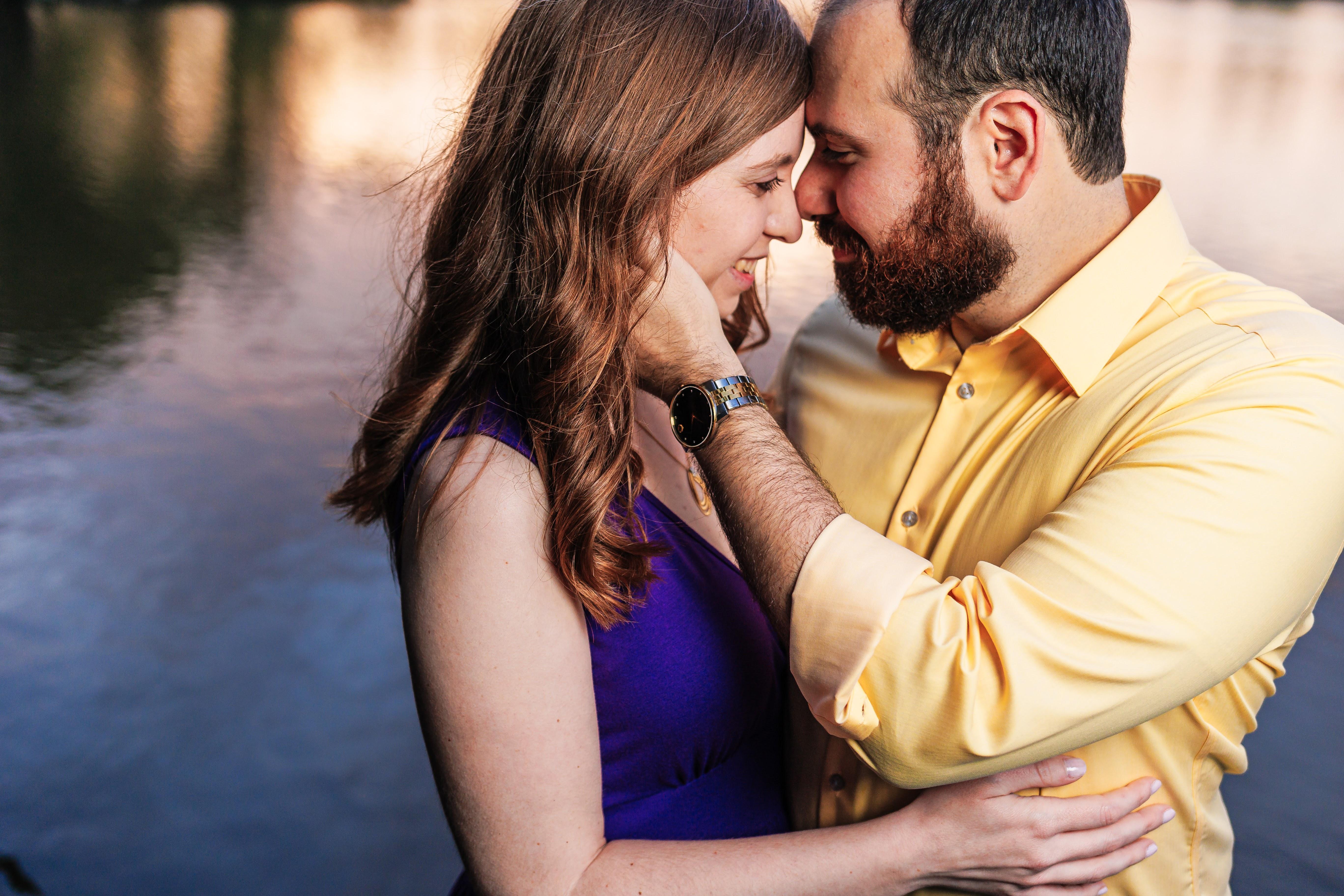Steven & Michelle
Jewish Wedding Ceremony

Question
Chatan's and Kallah's Tisches (Receptions)
Answer
Before the ceremony, Michelle and Steven will each welcome guests separately, in accordance with traditional Jewish wedding practice, where there will be toasts, traditional songs, and words of Torah. We have chosen to have smaller receptions with immediate family and our wedding party.
Question
Ketubah Signing (Marriage Contract)
Answer
After the tisches end, Michelle will be joyfully escorted in a procession with music, singing, and dancing to greet Steven. After being blessed by our parents, we will sign the ketubah, a marriage contract that outlines the commitments and responsibilities we make to one another. We selected our ketubah text to be based in tradition but fully egalitarian, reflecting our shared values. The ketubah is signed by two witnesses who are unrelated to the couple, which represents that they enter into the marriage by choice. Our ketubah witnesses are members of our wedding party, Kimberly Sterin and Jamie Freiman.
Question
Hakafot (Circling)
Answer
Before entering the chuppah, Michelle will circle Steven three times, Steven will circle Michelle three times, and then they will circle each other once, for a total of seven times. This tradition creates a separation of couple from the rest of society, a private space where only the two may enter. The seven circles also represent the seven wedding blessings, the seven days of creation, and the seven patriarchs and matriarchs.
Question
Chuppah (Marriage Canopy)
Answer
The wedding ceremony takes place under a chuppah, or marriage canopy, which symbolizes the home Michelle and Steven will build together. The four open walls indicate to visitors, family, and friends that they will always be welcome, and the roof symbolizes the shelter of love and support the couple will share with each other throughout their lives. The cloth being used to cover the chuppah is a tablecloth that was embroidered by Michelle’s great-grandmother Gertrude, the mother of her maternal Zaydie (grandfather).
Question
Erusin (Betrothal)
Answer
We open with a blessing over a cup of wine, the traditional symbol of joy and sweetness in Judaism. Drinking from the same cup of wine marks the first expression of the life Michelle and Steven will share. The second blessing is the betrothal blessing, a recognition of the sacred relationship Michelle and Steven have with each other.
Question
Kiddushin (Wedding Vows and Rings)
Answer
Michelle and Steven will share traditional Jewish vows and then exchange rings. In Jewish law, the groom must give the bride a ring that is an unbroken band without stones. Michelle and Steven will present each other with rings, the circles of which symbolize the eternal nature of marriage and that their love is never-ending. After the rings are presented and the traditional vows read, a portion of the ketubah will be read and Michelle and Steven will present their own vows to each other.
Question
Nissu'in (Marriage)
Answer
During this second part of the ceremony the Sheva Brachot, or seven blessings, are recited. These seven blessings are the most ancient of the Jewish wedding traditions and the heart of the ceremony. The blessings cover many themes: the creation of the world, the survival of the Jewish people, the marriage and happiness of the bride and groom, with the final blessing celebrating the bride and groom. Michelle and Steven have selected members of their family and dear friends to recite these blessings. Please join us in singing during the seventh blessing: Asher bara sason v’simchah, chatan v’kallah (x2) Gilah, rina, ditzah v’chevdah, ahavah, v’achvah, v’shalom v’rei’ut (x2) Kol sason v’kol simcha, kol chatan, v’kol kallah. (x2)
Question
Breaking of the Glass
Answer
At the conclusion of the ceremony, Michelle and Steven will each break a glass by stepping on it. This well-known custom has several symbolic meanings. One explanation is that by breaking the glass, we are reminded as a Jewish people to remember less fortunate times and to temper sorrow by recalling more joyous memories or hope for the future. Another explanation is that the broken glass represents the brokenness that exists in the wider world, and that the bride and groom coming together gives us hope that we are one step closer to repairing our world. After the glass is broken, it is customary for guests to shout “Mazel Tov” as the couple shares their first kiss as a married couple.
Question
Yichud (Seclusion)
Answer
Immediately after the ceremony, Michelle and Steven will adjourn to a private room for several minutes of yichud (seclusion) to share their first moments together as husband and wife.